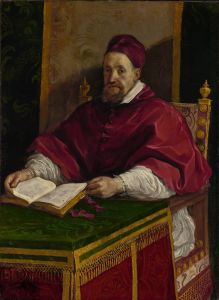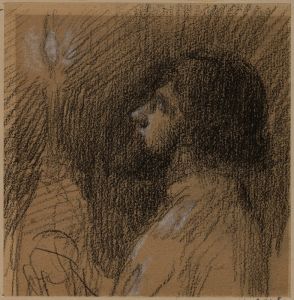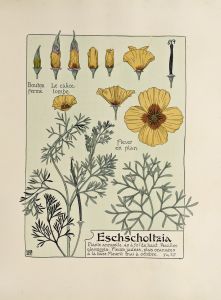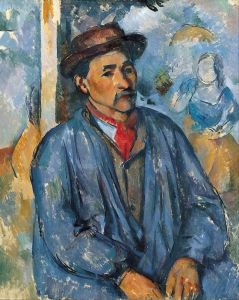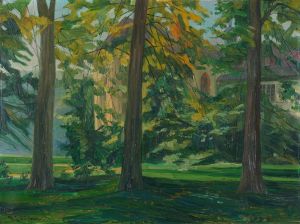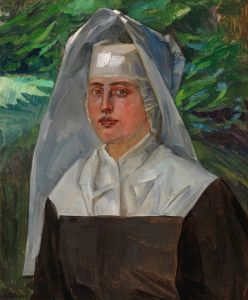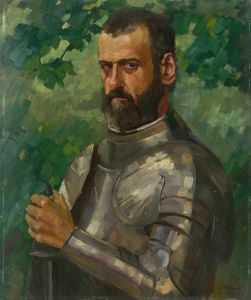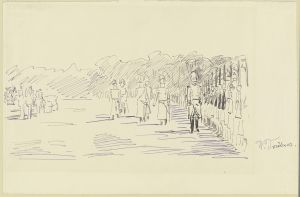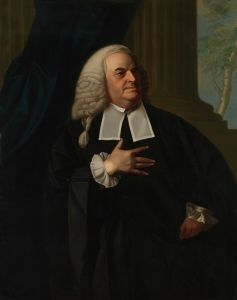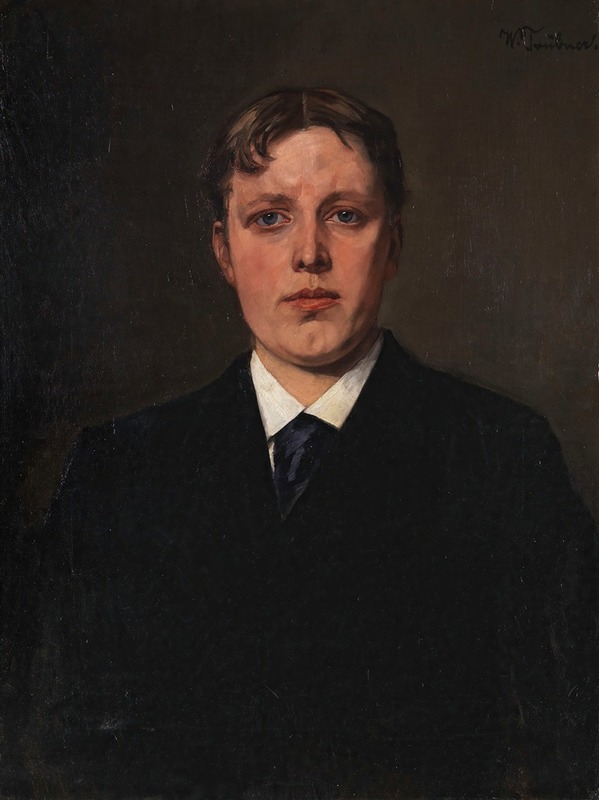
Bildnis Nikolaus Trübner, Bruder des Künstlers
A hand-painted replica of Wilhelm Trübner’s masterpiece Bildnis Nikolaus Trübner, Bruder des Künstlers, meticulously crafted by professional artists to capture the true essence of the original. Each piece is created with museum-quality canvas and rare mineral pigments, carefully painted by experienced artists with delicate brushstrokes and rich, layered colors to perfectly recreate the texture of the original artwork. Unlike machine-printed reproductions, this hand-painted version brings the painting to life, infused with the artist’s emotions and skill in every stroke. Whether for personal collection or home decoration, it instantly elevates the artistic atmosphere of any space.
Wilhelm Trübner (1851–1917) was a German realist painter associated with the Munich School, known for his detailed and naturalistic works. One of his notable paintings, Bildnis Nikolaus Trübner, Bruder des Künstlers (Portrait of Nikolaus Trübner, Brother of the Artist), is a striking example of his portraiture. This artwork depicts Nikolaus Trübner, Wilhelm's brother, and is a testament to the artist's ability to capture the individuality and character of his subjects.
The painting is executed in oil on canvas, a medium Trübner frequently used. It showcases his mastery of light, texture, and form, hallmarks of his realist style. The portrait focuses on Nikolaus Trübner, presenting him in a natural and unembellished manner, which aligns with the realist movement's emphasis on depicting subjects truthfully and without idealization. The brushwork is meticulous, and the color palette is subdued yet rich, emphasizing the sitter's features and expression.
Wilhelm Trübner was influenced by his studies under Wilhelm Leibl, a prominent figure in the German realist movement. Leibl's approach to painting, which prioritized observation and the truthful representation of nature, had a significant impact on Trübner's artistic development. This influence is evident in Bildnis Nikolaus Trübner, where the attention to detail and the lifelike portrayal of the subject reflect the principles of the Leibl circle.
The painting is also notable for its personal significance, as it portrays a family member of the artist. This adds an intimate dimension to the work, suggesting that Trübner may have had a close relationship with his brother. However, the exact nature of their relationship and the circumstances surrounding the creation of the portrait are not well-documented.
Today, Wilhelm Trübner's works, including Bildnis Nikolaus Trübner, are appreciated for their contribution to 19th-century German realism. His paintings are held in various museums and private collections, though specific details about the current location of this particular portrait are not readily available.
This artwork exemplifies Trübner's skill as a portraitist and his dedication to the realist aesthetic, making it a valuable piece within his oeuvre and the broader context of German art history.






